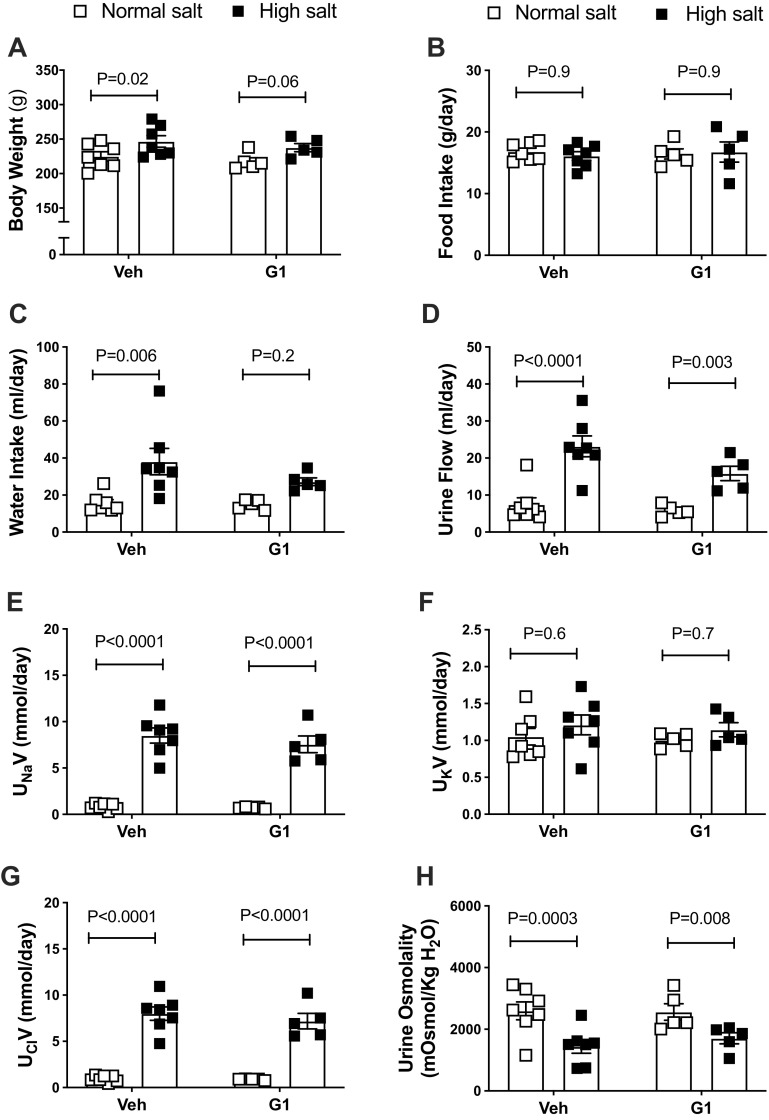Figure 3.
Body weight and metabolic cage parameters in female Dahl salt-sensitive (SS) rats. Body weight (A), food intake (B), water intake (C), urine flow (D), urinary excretion of Na+ (UNaV) (E), K+ (UKV) (F) and Cl− (UClV) (G), and urine osmolality (H) were measured in female Dahl SS rats systemically treated with GPER1 agonist (G1; 400 μg/kg/day) or vehicle throughout the normal salt (NS) and subsequent high-salt diet (HS) periods. Data are presented as means ± SE (n = 5 and 7 rats in the G1- and vehicle-treated group, respectively. Statistical comparisons were performed by repeated-measures two-way ANOVA with Sidak’s post hoc test for multiple comparisons. Two-way ANOVA results: body weight: Pinteraction = 0.9, PG1 = 0.4, Pdiet = 0.003; food intake: Pinteraction = 0.7, PG1 = 0.8, Pdiet = 0.9; water intake: Pinteraction = 0.3, PG1 = 0.2, Pdiet = 0.003; urine flow: Pinteraction = 0.09, PG1 = 0.1, Pdiet < 0.0001; UNaV: Pinteraction = 0.5, PG1 = 0.4, Pdiet < 0.0001; UKV: Pinteraction = 0.9, PG1 =0.6, Pdiet = 0.3; UClV: Pinteraction = 0.5, PG1 = 0.4, Pdiet <0.0001; urine osmolality: Pinteraction = 0.3, PG1 = 0.7, Pdiet < 0.0001. Veh, vehicle. P values computed by the multiple pairwise comparisons test between NS and HS are displayed on the figures. P values computed by the multiple-comparisons test between G1 and vehicle-treated rats are > 0.05.

